Rubus magurensis (Rosaceae): A New Bramble Species from the Northern Carpathians (Poland)
Abstract
1. Introduction
2. Materials and Methods
3. Results
3.1. Taxonomy
3.2. Habitat
3.3. Distribution
4. Discussion
| R. magurensis | R. tabanimontanus | R. chaerophyllus | R. clusii | |
|---|---|---|---|---|
| Indumentum of first-year stem | stem glabrous or occasionally with simple hairs, with quite numerous subsessile glands and sparse stalked glands and gland-tipped acicles | stem glabrous or rarely with simple hairs, without or occasionally with few short-stalked glands | stem sparsely hairy, without or with few stalked glands | stem with scattered, simple and tufted hairs, and with few to numerous acicles (somewhat gland-tipped) and stalked glands |
| Number of prickles per 5 cm of stem length | 6–12 | 5–13 | 8–16 | 8–12 |
| Length of prickles on first-year stems [mm] | (2.5–)3.5–5.5(–6.5) | 5–7(–9) | (3–)5–7(–9) | 4–7 |
| Length of terminal leaflet petiolule in relation to the lamina length (ratio) | 21–28% as long as leaflet lamina | 28–35% as long as leaflet lamina | 20–25% as long as leaflet lamina | 30–37% as long as leaflet lamina |
| Shape of inflorescence | paniculate, narrowly conical, leafy to the apex | paniculate, short, leafless above | paniculate, short, irregular, flattened at the apex | paniculate, usually narrow, almost cylindrical, leafy almost to the apex, with 3-foliolate leaves below |
| Indumentum of inflorescence axis | inflorescence axis with scattered simple and tufted hairs, subsessile glands, stalked glands and gland-tipped acicles | inflorescence axis usually sparsely hairy with simple and stellate hairs, with few stalked glands | inflorescence axis usually sparsely hairy with patent simple and tufted hairs, usually with admixture of stellate hairs and gland-tipped acicles | inflorescence axis with numerous simple and tufted hairs and numerous stalked glands, often with acicles (somewhat gland-tipped) |
| Petals | white, elliptical, 12–16 mm long | white, elliptical, 9–10 mm long | white or pinkish, narrowly obovate, 7–8 mm long | white, elliptical, 10–13 mm long |
| Stamen vs. style length | stamens slightly exceeding styles | stamens longer than styles | stamens longer than styles | stamens slightly exceeding styles |
Author Contributions
Funding
Data Availability Statement
Acknowledgments
Conflicts of Interest
Appendix A. An Identification Key to Species Representing Rubus Series Micantes in Poland
References
- Leuschner, C.; Ellenberg, H. Forest Plantations and Clearings. In Ecology of Central European Forests: Vegetation Ecology of Central Europe; Springer International Publishing: Cham, Switzerland, 2017; Volume 1, pp. 607–632. [Google Scholar] [CrossRef]
- Schulze, E.D.; Beck, E.; Buchmann, N.; Clemens, S.; Müller-Hohenstein, K.; Scherer-Lorenzen, M. Interactions Between Plants, Plant Communities and the Abiotic and Biotic Environment. In Plant Ecology; Springer: Berlin/Heidelberg, Germany, 2019; pp. 689–741. [Google Scholar] [CrossRef]
- Grabek-Lejko, D. Exploiting the antioxidant, anti-inflammatory, antimicrobial and anticancer potential of Rubus species. CAB Rev. 2015, 10, 201510014. [Google Scholar] [CrossRef]
- Grabek-Lejko, D.; Miłek, M.; Sidor, E.; Puchalski, C.; Dżugan, M. Antiviral and Antibacterial Effect of Honey Enriched with Rubus spp. as a Functional Food with Enhanced Antioxidant Properties. Molecules 2022, 27, 4859. [Google Scholar] [CrossRef]
- Gil-Martínez, L.; Mut-Salud, N.; Ruiz-García, J.A.; Falcón-Piñeiro, A.; Maijó-Ferré, M.; Baños, A.; De la Torre-Ramírez, J.M.; Guillamón, E.; Verardo, V.; Gómez-Caravaca, A.M. Phytochemicals Determination, and Antioxidant, Antimicrobial, Anti-Inflammatory and Anticancer Activities of Blackberry Fruits. Foods 2023, 12, 1505. [Google Scholar] [CrossRef]
- Kollmann, J.; Steinger, T.; Roy, B.A. Evidence of sexuality in European Rubus (Rosaceae) species based on AFLP and allozyme analysis. Am. J. Bot. 2000, 87, 1592–1598. [Google Scholar] [CrossRef]
- Kurtto, A.; Weber, H.E.; Lampinen, R.; Sennikov, A.N. (Eds.) Atlas Florae Europaeae: Distribution of Vascular Plants in Europe; 15. Rosaceae (Rubus); The Committee for Mapping the Flora of Europe & Societas Biologica Fennica Vanamo: Helsinki, Finland, 2010; pp. 1–362. [Google Scholar]
- Holub, J. A preliminary checklist of Rubus species occurring in the Czech Republic. Preslia 1992, 64, 97–132. [Google Scholar]
- Weber, H.E. Rubus L. In Gustav Hegi Illustrierte Flora von Mitteleuropa, 3rd ed.; Conert, H.J., Jager, E.J., Kadereit, J.W., Schulze-Motel, W., Wagenitz, G., Weber, H.E., Eds.; Blackwell Wissenschafts: Berlin/Heidelberg, Germany, 1995; Volume 4/2A, pp. 284–595. [Google Scholar]
- Sochor, M.; Trávníček, B.; Király, G. Ploidy level variation in the genus Rubus in the Pannonian Basin and the northern Balkans, and evolutionary implications. Plant Syst. Evol. 2019, 305, 611–626. [Google Scholar] [CrossRef]
- Király, G.; Trávniček, B.; Žíla, V. Revision of Rubus ser. Micantes occurring in Hungary and re-evaluation of the neglected Rubus balatonicus. Preslia 2013, 85, 505–526. [Google Scholar]
- Király, G.; Trávniček, B.; Žíla, V. Rubus gayeri and Rubus slavonicus, two new species of Rubus ser. Micantes (Rosaceae) from Central and South-Eastern Europe. Phytotaxa 2015, 195, 279–290. [Google Scholar] [CrossRef]
- Király, G. Typification of the name Rubus styriacus (Rosaceae). Phytotaxa 2017, 299, 147–150. [Google Scholar] [CrossRef]
- Prosser, F.; Király, G. Extending the range of Rubus ser. Micantes (Rosaceae) southward: Rubus vallis-cembrae, a unique new species from Italy. Willdenowia 2019, 49, 167–175. [Google Scholar] [CrossRef]
- Zieliński, J. The Genus Rubus (Rosaceae) in Poland; Polish Academy of Sciences, W. Szafer Institute of Botany: Kraków, Poland, 2004; pp. 1–300. [Google Scholar]
- Trávníček, B.; Zázvorka, J. Taxonomy of Rubus ser. Discolores in the Czech Republic and adjacent regions. Preslia 2005, 77, 1–88. [Google Scholar]
- Trávníček, B.; Oklejewicz, K.; Zieliński, J. Rubus ambrosius (Rubus subsect. Rubus, Rosaceae), a new bramble species from the eastern part of Central Europe. Folia Geobot. 2005, 40, 421–434. [Google Scholar] [CrossRef]
- Kosiński, P.; Maliński, T.; Sliwinska, E.; Zieliński, J. Rubus prissanicus (Rosaceae), a new bramble species from North West Poland. Phytotaxa 2018, 344, 239–247. [Google Scholar] [CrossRef]
- Kosiński, P.; Maliński, T.; Nobis, M.; Rojek-Jelonek, M.; Tomaszewski, D.; Dering, M.; Zieliński, J. Rubus kaznowskii (Rosaceae), a new bramble species from south-central Poland. PhytoKeys 2021, 185, 27–41. [Google Scholar] [CrossRef]
- Maliński, T.; Zieliński, J.; Kosiński, P. Rubus limitaneus (series Mucronati, subgenus Rubus, Rosaceae)—A species new to science from NW Poland. Dendrobiology 2014, 72, 57–64. [Google Scholar] [CrossRef][Green Version]
- Wolanin, M.M.; Wolanin, M.N.; Musiał, K.; Kania, I.; Oklejewicz, K. Rubus zielinskii (Rosaceae), a new species from Poland. Phytotaxa 2016, 273, 183–190. [Google Scholar] [CrossRef]
- Wolanin, M.; Musiał, K.; Nobis, M. Rubus oklejewiczii (Rosaceae), a new bramble species from Central Europe (Poland: Carpathians). Phytotaxa 2020, 438, 189–198. [Google Scholar] [CrossRef]
- Sochor, M.; Lepší, M.; Lepší, P.; Valebil, J.; Király, G.; Trávníček, B. Taxonomy and nomenclature of Rubus ser. Glandulosi (Rosaceae) across its Eurasian range: Revised concepts and new approaches. Taxon 2025. Early View. [Google Scholar] [CrossRef]
- Kosiński, P. Current distribution of the recently described bramble species, Rubus guttiferus (Rosaceae), in Poland. Dendrobiology 2006, 56, 45–50. [Google Scholar]
- Kosiński, P. The genus Rubus in the Bardo Mts (Central Sudetes). Dendrobiology 2010, 63, 77–98. [Google Scholar]
- Kosiński, P.; Oklejewicz, K. Rubus parthenocissus (Rosaceae) in Poland. Dendrobiology 2006, 55, 33–38. [Google Scholar]
- Kosiński, P.; Zieliński, J. Rubus maximus (Rosaceae) found also in Poland. Botanika-Steciana 2013, 17, 33–37. [Google Scholar]
- Oklejewicz, K.; Trávníček, B.; Wolanin, M. New localities of Rubus clusii (Rosaceae) seriously expanding it range towards the East. Dendrobiology 2013, 70, 93–98. [Google Scholar] [CrossRef][Green Version]
- Kosiński, P.; Czarna, A.; Malinski, T. Rubus occidentalis (Rosaceae)—A new naturalized raspberry species in the Polish flora. Dendrobiology 2014, 71, 159–165. [Google Scholar] [CrossRef]
- Maliński, T.; Zieliński, J.; Kosiński, P. Rubus lindebergii (Rosaceae)—New species for the flora of Poland. Dendrobiology 2015, 74, 143–147. [Google Scholar] [CrossRef]
- Zając, A. Założenia metodyczne “Atlasu rozmieszczenia roślin naczyniowych w Polsce“. Wiad. Bot. 1978, 22, 145–155. [Google Scholar]
- Plants of the World Online. Facilitated by the Royal Botanic Gardens, Kew. Available online: https://powo.science.kew.org/ (accessed on 4 June 2025).
- The IUCN Red List of Threatened Species, Version 2025-1; IUCN Red List Unit: Cambridge, UK. Available online: http://www.iucnredlist.org/ (accessed on 4 June 2025).
- Krahulcová, A.; Trávníček, B.; Šarhanová, P. Karyological variation in the genus Rubus, subgenus Rubus: New data from the Czech Republic and synthesis of the current knowledge of European species. Preslia 2013, 85, 19–39. [Google Scholar]
- Boratyńska, K. Chromosome numbers in Polish brambles (Rubus L., Rosaceae). II. Arbor. Kórn. 1994, 39, 57–61. [Google Scholar]
- Boratyńska, K. Chromosome numbers in Polish brambles (Rubus L., Rosaceae). III. Arbor. Kórn. 1995, 40, 5–9. [Google Scholar]
- Boratyńska, K. Chromosome numbers in Polish brambles (Rubus L., Rosaceae). V. Arbor. Kórn. 1997, 42, 101–110. [Google Scholar]
- Boratyńska, K. Chromosome numbers in Polish brambles (Rubus L., Rosaceae). VI. Arbor. Kórn. 1998, 43, 31–35. [Google Scholar]
- Krahulcová, A.; Holub, J. Chromosome number variation in the genus Rubus in the Czech Republic. I. Preslia 1997, 68, 241–255. [Google Scholar]
- Krahulcová, A.; Holub, J. Chromosome number variation in the genus Rubus in the Czech Republic. III. Preslia 1998, 70, 33–50. [Google Scholar]
- Holub, J. Rubus L.—ostružiník (maliník, moruška, ostružinec, ostružiníček). In Květena České Republiky Flora of the Czech Republic; Slavík, B., Ed.; Academia: Praha, Czech Republic, 1995; Volume 4, pp. 54–206. [Google Scholar]
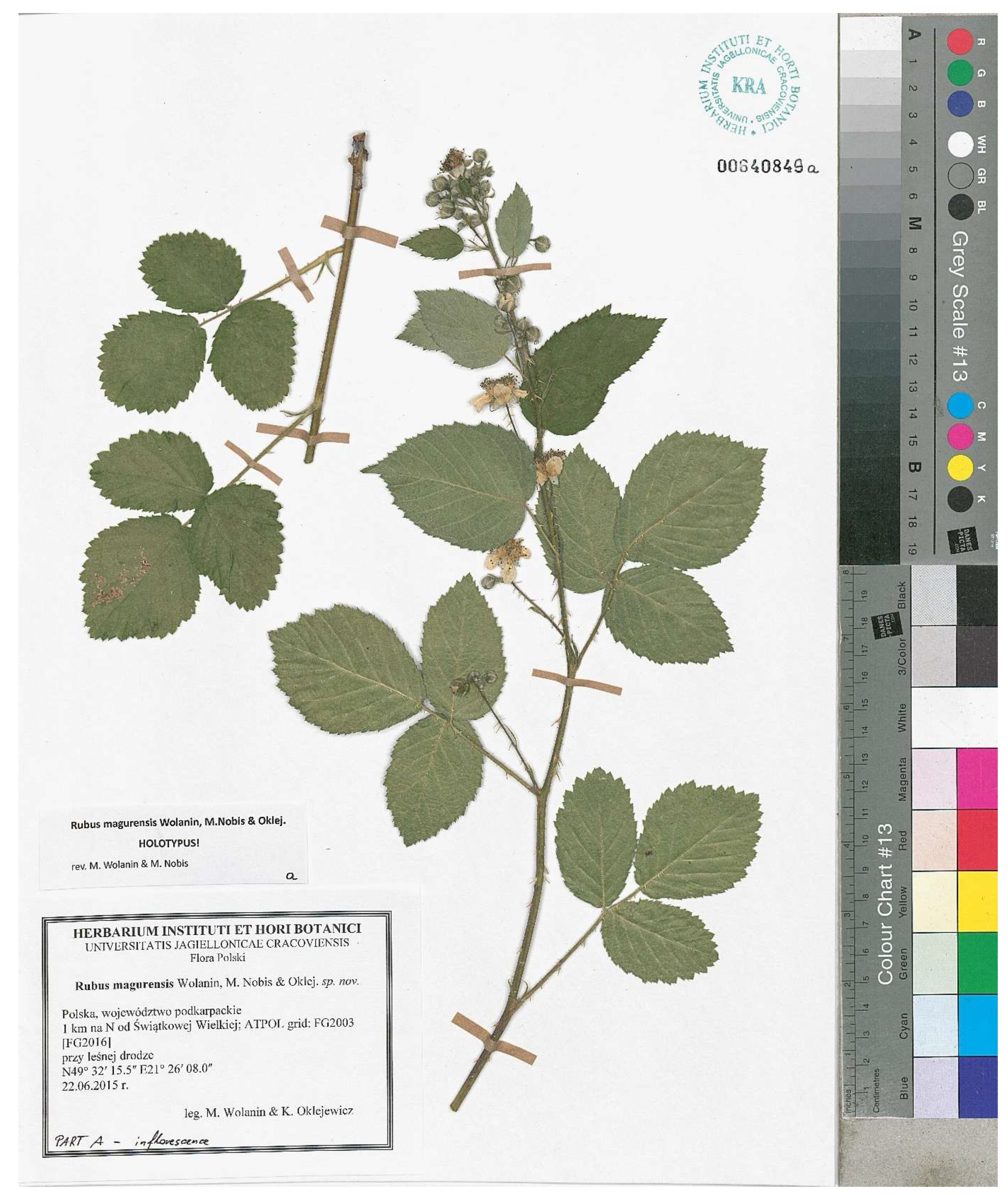
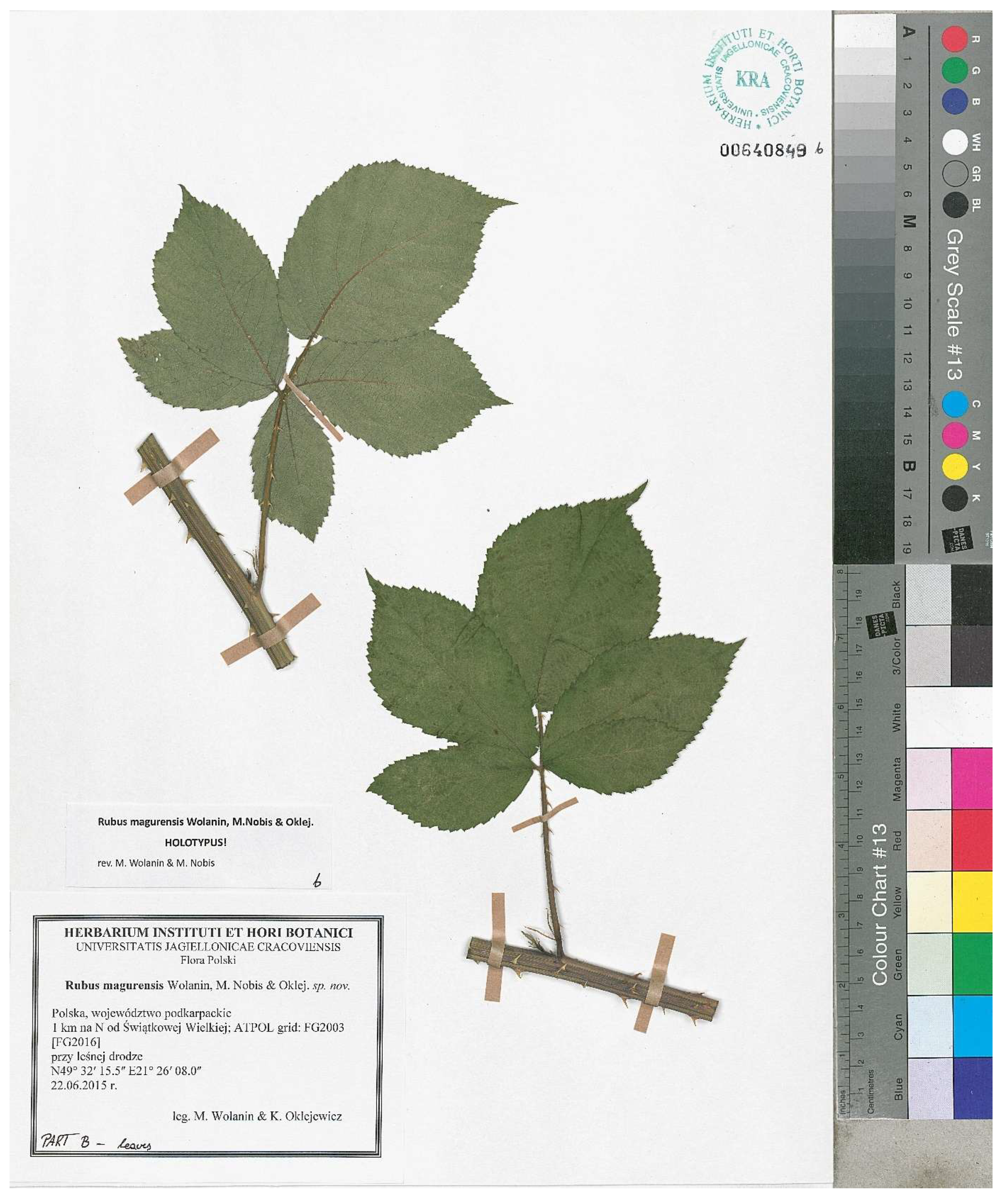
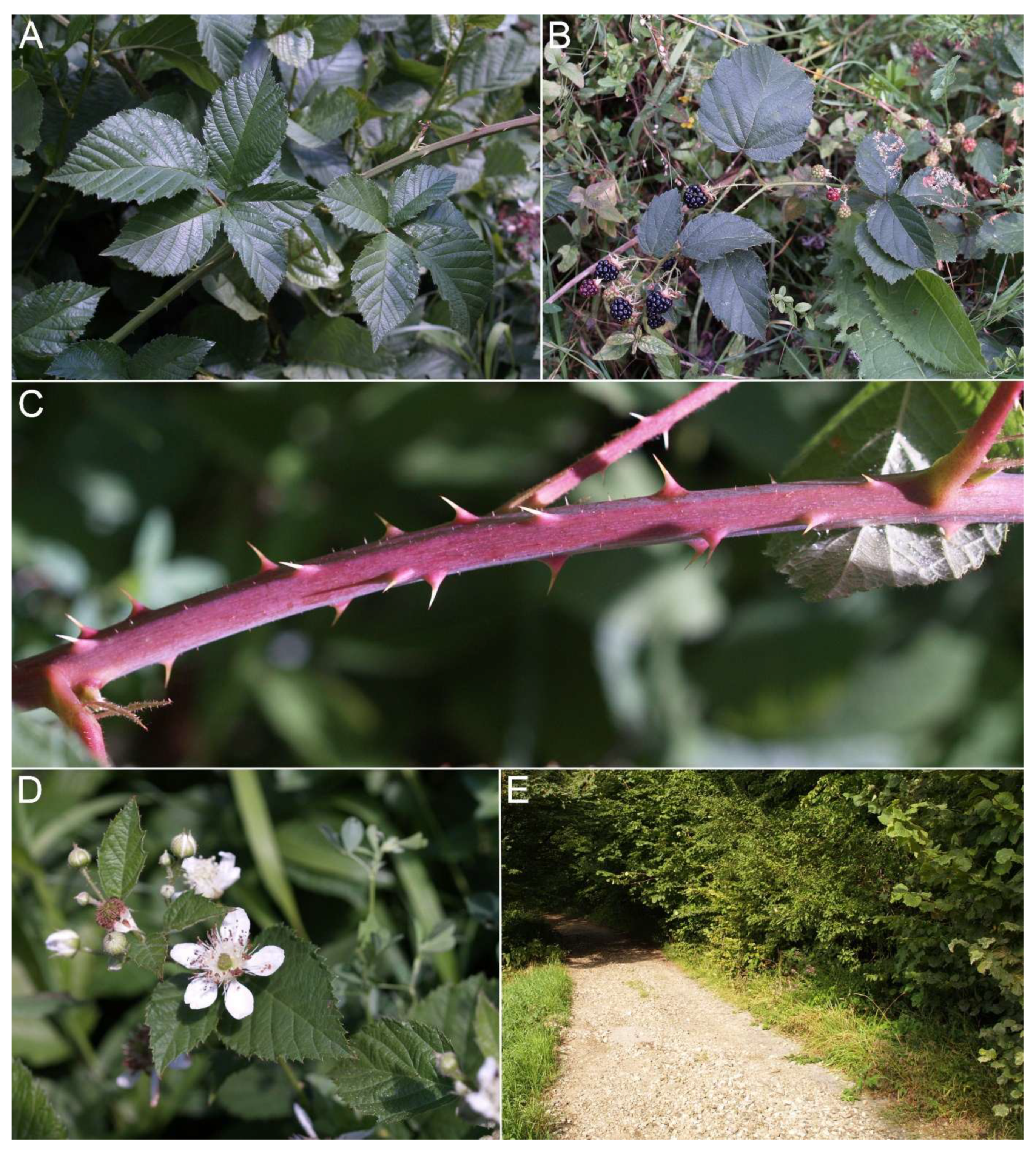
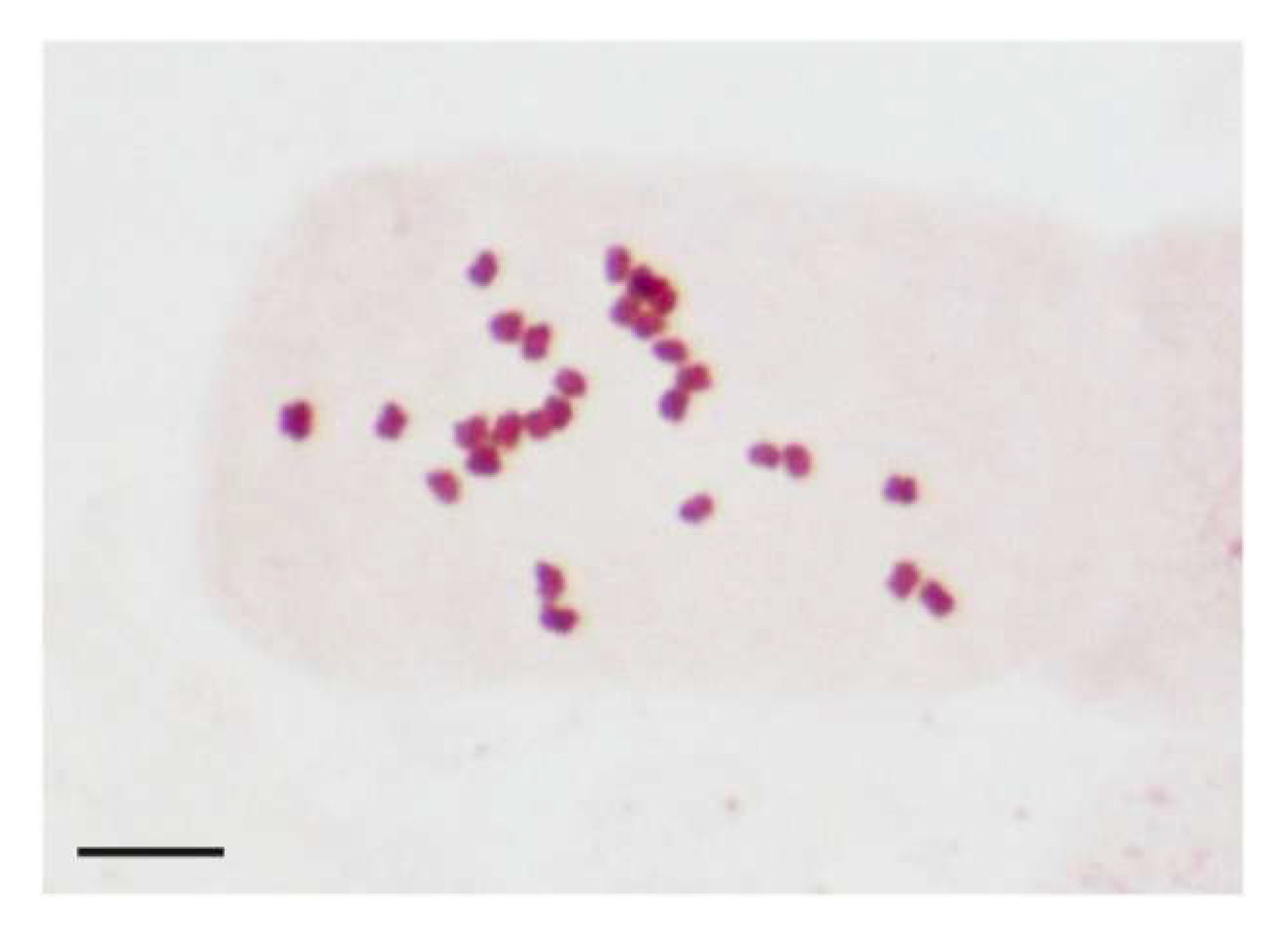
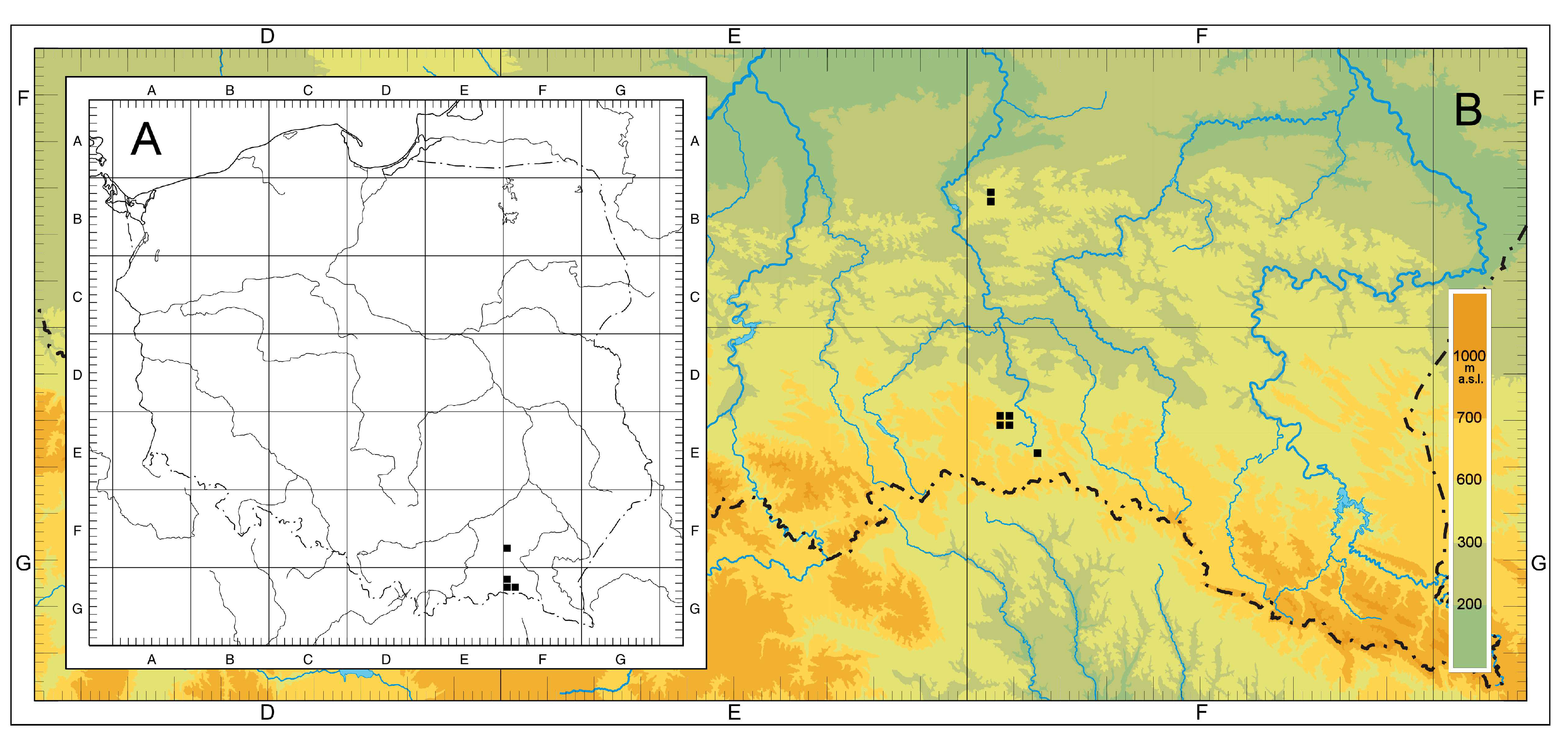
Disclaimer/Publisher’s Note: The statements, opinions and data contained in all publications are solely those of the individual author(s) and contributor(s) and not of MDPI and/or the editor(s). MDPI and/or the editor(s) disclaim responsibility for any injury to people or property resulting from any ideas, methods, instructions or products referred to in the content. |
© 2025 by the authors. Licensee MDPI, Basel, Switzerland. This article is an open access article distributed under the terms and conditions of the Creative Commons Attribution (CC BY) license (https://creativecommons.org/licenses/by/4.0/).
Share and Cite
Wolanin, M.; Musiał, K.; Nobis, M. Rubus magurensis (Rosaceae): A New Bramble Species from the Northern Carpathians (Poland). Forests 2025, 16, 1286. https://doi.org/10.3390/f16081286
Wolanin M, Musiał K, Nobis M. Rubus magurensis (Rosaceae): A New Bramble Species from the Northern Carpathians (Poland). Forests. 2025; 16(8):1286. https://doi.org/10.3390/f16081286
Chicago/Turabian StyleWolanin, Mateusz, Krystyna Musiał, and Marcin Nobis. 2025. "Rubus magurensis (Rosaceae): A New Bramble Species from the Northern Carpathians (Poland)" Forests 16, no. 8: 1286. https://doi.org/10.3390/f16081286
APA StyleWolanin, M., Musiał, K., & Nobis, M. (2025). Rubus magurensis (Rosaceae): A New Bramble Species from the Northern Carpathians (Poland). Forests, 16(8), 1286. https://doi.org/10.3390/f16081286





